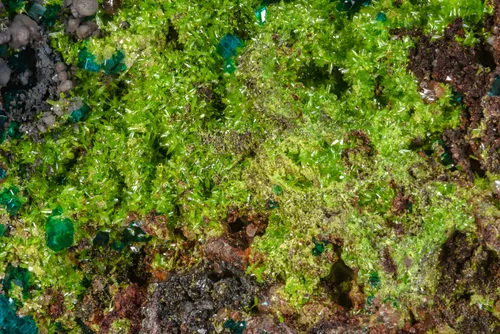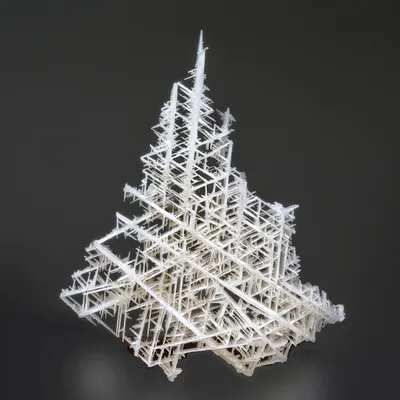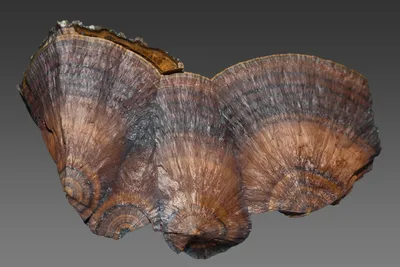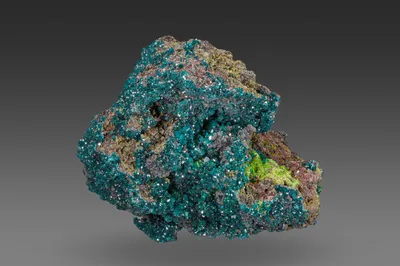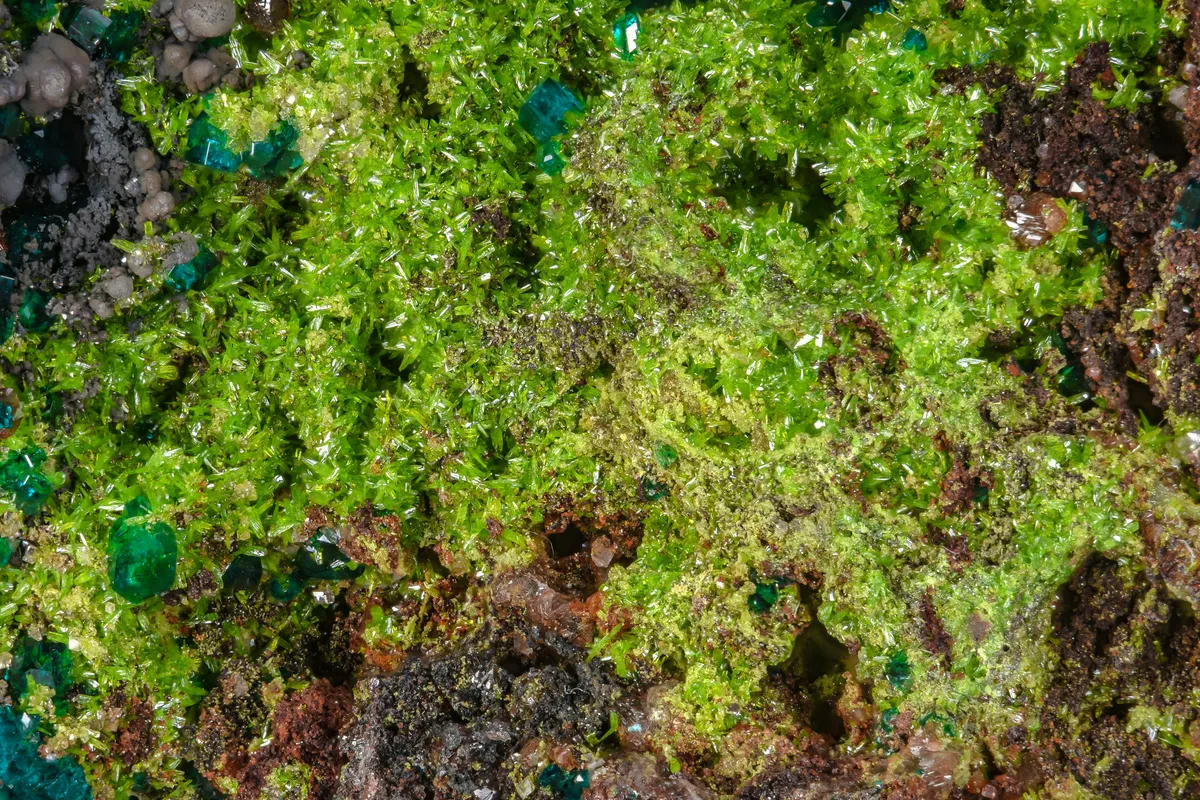
Image Credit: John Schneider
Mineral Species
Molybdofornacite
Type Locality
Yes
Composition
Pb2CuAsO4MoO4(OH)
Crystal System
Monoclinic
Status at Tsumeb
Confirmed (type locality)
Abundance
Very rare
Distribution
Second oxidation zone
Paragenesis
Supergene
Entry Number
Species; TSNB246
Type Mineralogy
Close inspection of a dioptase specimen recovered from Tsumeb’s second oxidation zone revealed tiny elongated crystals which gave an XRD pattern very similar to fornacite; chemical analysis, however, showed that up to 80 mol % of the chromium was replaced by molybdenum (Medenbach et al. 1983a). Molybdofornacite, IMA 1982-062, was named for its composition and relationship with fornacite (with which it is isostructural). Type material is conserved at the Institut für Mineralogie, Ruhr-Universität Bochum, in Germany, with co-type material in the collection of Paul Keller at the Institut für Mineralogie und Kristallchemie, Universität Stuttgart, Germany.
General Notes
Molybdofornacite occurs as tiny prismatic to lath-like crystals, conspicuous, lime-green, and transparent, in a characteristic paragenesis with dioptase and wulfenite. Individual crystals are elongated on the b-axis up to 300 µm in length by 50 µm wide (Medenbach et al. 1983a). They occur in isolation or in dense aggregates but, either way, pairs of crystals are commonly fused in a V-shape with an apparently constant angle of c. 120o between the individuals which Medenbach et al. (1983a) assumed to be twinning on an unspecified twin law. Anthony et al. (1990-2003) described these as "Rare, ‘butterfly’ contact twins, at 120o."
According to Medenbach et al. (1983a) associated minerals on the type specimen are calcite, dioptase, duftite, limonite and quartz, with molybdofornacite apparently the latest-forming mineral in the paragenesis.
A specimen originally in the John Innes Collection (JI-237; Gartrell #11236) hosts sparse blades of molybdofornacite associated with duftite/conichalcite, rosasite, cerussite, calcite and dolomite. Dioptase is present (but very sparsely) and the abundant presence of cerussite and rosasite makes this an atypical paragenesis (M. Southwood; personal observation, 2023).
Gebhard (1999) reported molybdofornacite crystals to 1 mm in length and noted that the mineral only occurs as part of a paragenesis that includes both dioptase and wulfenite. He considered molybdofornacite "extremely rare".
Associated Minerals
calcite; cerussite; dioptase; dolomite; duftite; goethite; quartz; rosasite; wulfenite
